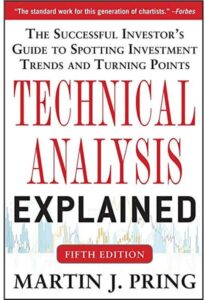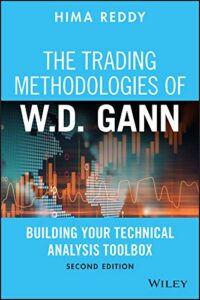As a trader in the stock market, understanding the importance of price action is crucial to your success. Price action refers to the movement of a stock’s price over time, and it is an essential tool for traders who want to analyze market trends and make informed decisions about when to buy and sell stocks.
One effective way to learn price action trading is by reading books written by experienced traders and experts in the field. There are several excellent books available that cover a wide range of topics related to price action trading, including technical analysis, chart patterns, and risk management.
In this article, we will discuss the 6 best books to learn price action trading for beginners in 2023. These books have been selected based on their relevance to current market trends and their effectiveness in teaching the key concepts of price action trading.
Whether you’re a beginner or an experienced trader, these books can help you improve your trading skills and achieve greater success in the stock market. So, let’s dive into the top books for learning price action trading for beginners.
What is Price Action?
Before we dive into the books, let’s take a moment to understand what price action is.
Price action refers to the study of price movements in financial markets, with the goal of identifying trading opportunities based on the behavior of price. Price action traders analyze price charts to identify patterns, trends, and key levels of support and resistance.
Price action trading is based on the belief that all the information needed to make trading decisions can be found in the price movements themselves, rather than relying on external indicators or fundamental analysis.
Key Concepts in Price Action Trading
To understand price action trading, it’s essential to grasp several key concepts. These include support and resistance levels, trendlines, and chart patterns.
1. Support and Resistance Levels
Support and resistance levels are key price points where the price is expected to bounce or reverse. Support levels are areas where buyers are expected to enter the market, while resistance levels are areas where sellers are expected to enter the market.
Traders can use support and resistance levels to identify potential entry and exit points for trades.
2. Trendlines
Trendlines are lines drawn on a chart that connect two or more price points and can help identify the direction of the trend. By identifying trendlines, traders can determine whether the market is trending up, down, or sideways, and make trading decisions accordingly.
3. Chart Patterns
Chart patterns are recurring patterns in price charts that can help traders identify potential trading opportunities. Common chart patterns include triangles, head and shoulders, and double tops and bottoms.
By recognizing these patterns, traders can anticipate potential price movements and make better trading decisions.
Benefits of Price Action Trading
Price action trading offers several benefits over other trading methods. These include:
- Simplicity: Price action trading is based on the belief that all the information needed to make trading decisions can be found in the price movements themselves, rather than relying on external indicators or fundamental analysis. This makes price action trading a simple and straightforward approach to trading.
- Flexibility: Price action trading can be used in any financial market, including stocks, forex, and commodities. This makes it a flexible approach to trading that can be adapted to different market conditions.
- Risk Management: Price action traders use key levels of support and resistance to manage risk by placing stop-loss orders at these levels. This helps to limit potential losses and protect profits.
- Timing: Price action traders use charts to identify potential trading opportunities and timing for trades. This allows traders to enter and exit the market at the most favorable times.
Best Books to Learn Price Action Trading for Beginners
Here are our top picks for the best books to learn price action trading in the stock market:

1. “Technical Analysis of the Financial Markets” by John J. Murphy
John J. Murphy’s “Technical Analysis of the Financial Markets” is a classic book on technical analysis that provides a comprehensive overview of the subject.
The book covers a wide range of technical analysis techniques, including chart patterns, indicators, and oscillators. Murphy’s writing style is clear and concise, making it easy for readers to understand even the most complex concepts.
This book is a must-read for anyone looking to learn technical analysis and develop a strong foundation in this approach to trading.

2. “Trading Price Action Trends” by Al Brooks
Al Brooks‘ “Trading Price Action Trends” is a comprehensive guide to price action trading. The book focuses on identifying and trading trends in the market, and provides detailed explanations of key concepts such as support and resistance levels, trendlines, and chart patterns.
Brooks’ writing style is engaging and easy to understand, making this book an excellent resource for both beginner and experienced traders.

3. “The Art and Science of Technical Analysis” by Adam Grimes
Adam Grimes‘ “The Art and Science of Technical Analysis” is a unique book that combines technical analysis with principles from the fields of psychology and neuroscience.
Grimes’ approach to technical analysis is based on the belief that successful trading requires a deep understanding of both the technical and psychological aspects of the market.
This book is a must-read for traders looking to take their technical analysis skills to the next level.

4. “Japanese Candlestick Charting Techniques” by Steve Nison
Steve Nison’s “Japanese Candlestick Charting Techniques” is a comprehensive guide to the use of Japanese candlesticks in technical analysis. The book covers a wide range of candlestick patterns, including doji, engulfing patterns, and harami.
Nison also covers everything from the basics of candlestick charting to more advanced techniques like the Three Line Strike and the Three Black Crows.
Nison’s writing style is clear and concise, making it easy for readers to understand the complex concepts of candlestick charting. This book is a must-read for traders looking to improve their technical analysis skills.

5. “Technical Analysis Explained” by Martin J. Pring
Martin J. Pring’s “Technical Analysis Explained” is a comprehensive guide to technical analysis that covers a wide range of topics, including chart patterns, indicators, and oscillators.
In this book, Pring covers everything from the basics of chart reading to more advanced topics like momentum indicators and oscillators. Pring’s writing style is engaging and easy to understand, making this book an excellent resource for traders of all skill levels.
The book includes numerous examples and case studies, making it easy for readers to apply the concepts to real-world trading situations.

6. “The Trading Methodologies of W.D. Gann” by Hima Reddy
Hima Reddy’s “The Trading Methodologies of W.D. Gann” is a unique book that explores the trading strategies and techniques of legendary trader W.D. Gann.
The book provides a comprehensive overview of Gann’s approach to trading, including his use of astrological and numerological analysis.
Reddy’s writing style is engaging and informative, making this book an excellent resource for traders interested in learning more about Gann’s trading methods.
This book is a must-read for anyone looking to gain a deeper understanding of the history and evolution of technical analysis.
Conclusion
In conclusion, price action trading is a powerful approach to trading that can help traders identify potential trading opportunities and make informed trading decisions. However, learning and mastering price action trading requires time, effort, and dedication.
And the best way to learn price action trading is by reading books written by experienced traders and experts in the field.
In this article, we discussed the best books to learn price action trading for beginners. These books cover a wide range of topics related to price action trading, including technical analysis, chart patterns, and risk management.
They have been selected based on their relevance to current market trends and their effectiveness in teaching the key concepts of price action trading. Whether you’re a beginner or an experienced trader, these books can help you improve your trading skills and achieve greater success in the stock market.
By reading these books and applying the concepts and strategies they teach, you can develop a strong foundation in price action trading and become a more successful trader.
So, if you’re looking to learn price action trading or improve your existing skills, we highly recommend reading the books discussed in this article. With the right knowledge and skills, you can achieve your trading goals and enjoy greater success in the stock market.
FAQ – Frequently Asked Questions
Q. Is price action trading suitable for day trading?
A: Yes, price action trading can be suitable for day trading. Many day traders use price action trading strategies to identify short-term trading opportunities and make informed trading decisions.
Q. How much capital is needed to start price action trading?
A: The amount of capital needed to start price action trading depends on the individual trader and their trading goals. While some traders may be able to start with a small amount of capital, others may need a larger amount to achieve their desired returns. It’s important to have a realistic understanding of the risks involved in trading and to only invest what you can afford to lose.
Q. Can price action trading be automated?
A: While some aspects of price action trading can be automated, such as identifying certain chart patterns, the human element of price action trading is still important. Traders must use their judgment and discretion when making trading decisions, and automated systems may not be able to take into account all of the nuances of price action trading.
Q. How long does it take to learn price action trading?
A: The time it takes to learn price action trading depends on the individual trader and their dedication to learning and practice. Some traders may be able to learn the basics of price action trading in a few weeks, while others may take several months or longer to develop the necessary skills and expertise.
Q. What are the benefits of a trading journal for price action traders?
A: Keeping a trading journal can be beneficial for price action traders as it allows them to track their trading performance, identify areas for improvement, and evaluate the effectiveness of their trading strategies. A trading journal can also help traders stay disciplined and maintain a consistent approach to trading.










